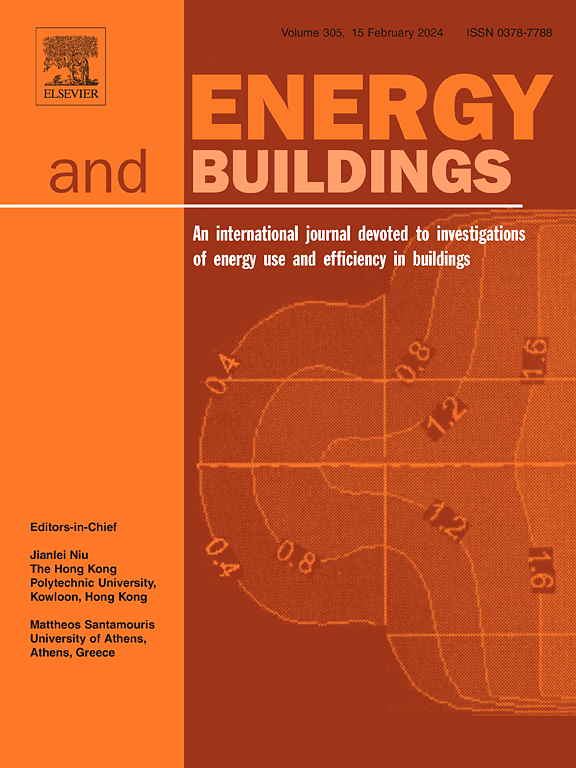基于物理信息的神经网络的冷却塔性能预测的发展与评价
IF 7.1
2区 工程技术
Q1 CONSTRUCTION & BUILDING TECHNOLOGY
引用次数: 0
摘要
准确预测冷却塔出水温度对于空调系统节能控制策略的实施至关重要,最终降低建筑运行中的能耗。本研究探讨了物理信息神经网络(PINN)的应用,以利用物理和数据驱动模型的优势来预测冷却塔的性能。为此,进行了四次实验,训练了2700个PINN模型和1900个人工神经网络(ANN)模型。通过各种方法开发的PINN模型的预测性能进行了全面评估。研究结果表明,将物理约束纳入人工神经网络模型以形成PINN模型可显著降低预测误差并降低模型训练成本。在实验结果的基础上,本文提出了一种构建用于冷却塔性能预测的PINN模型的系统方法。关键建议包括:将物理约束的比例设置为0.1,利用在数量和域长度上都占数据集20%的训练数据,并确保训练数据的分布集中在预测数据集中。在案例分析中,使用该方法建立的PINN模型的平均相对误差(MRE)和均方根误差(RMSE)分别为2.070%和0.309°C。与ANN模型相比,MRE提高了4.712%,RMSE降低了0.626°C。这些结果表明,PINN模型在预测冷却塔性能方面具有显著的优势和巨大的潜力,特别是在训练数据有限和数据集分布狭窄的情况下。本文章由计算机程序翻译,如有差异,请以英文原文为准。
Development and evaluation of cooling tower performance prediction using physics-informed neural networks
Accurate prediction of outlet water temperature in cooling towers is crucial for implementing energy-efficient control strategies in air-conditioning systems, ultimately leading to reduced energy consumption in building operations. This study investigates the application of physics-informed neural networks (PINN) to leverage the strengths of both physical and data-driven models for predicting cooling tower performance. To achieve this, four experiments were conducted, resulting in the training of 2700 PINN models and 1900 artificial neural network (ANN) models. The predictive performance of the PINN models, developed through various methodologies, was thoroughly evaluated. The findings revealed that incorporating physical constraints into ANN models to form PINN models significantly decreased prediction errors and reduced model training costs. Based on the experimental results, this study proposes a systematic approach for constructing PINN models for cooling tower performance prediction. Key recommendations include: setting the proportion of physical constraints to 0.1, utilizing training data that constitutes 20 % of the dataset in both quantity and domain length, and ensuring that the distribution of the training data is centered within the prediction dataset. In the case analysis, the mean relative error (MRE) and root mean square error (RMSE) of the PINN model developed using the suggested methodology were 2.070 % and 0.309 °C, respectively. In comparison to the ANN model, the MRE improved by 4.712 %, and the RMSE decreased by 0.626 °C. These results demonstrate that PINN models offer significant advantages and considerable potential for predicting cooling tower performance, especially in scenarios with limited training data and narrowly distributed datasets.
求助全文
通过发布文献求助,成功后即可免费获取论文全文。
去求助
来源期刊

Energy and Buildings
工程技术-工程:土木
CiteScore
12.70
自引率
11.90%
发文量
863
审稿时长
38 days
期刊介绍:
An international journal devoted to investigations of energy use and efficiency in buildings
Energy and Buildings is an international journal publishing articles with explicit links to energy use in buildings. The aim is to present new research results, and new proven practice aimed at reducing the energy needs of a building and improving indoor environment quality.
 求助内容:
求助内容: 应助结果提醒方式:
应助结果提醒方式:


